adjacent possible
description: concept of incremental innovation based on existing technologies
24 results
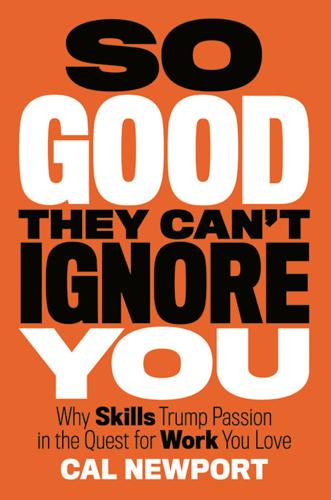
So Good They Can't Ignore You: Why Skills Trump Passion in the Quest for Work You Love
by
Cal Newport
Published 17 Sep 2012
“The truth,” Johnson explains, “is that technological (and scientific) advances rarely break out of the adjacent possible.” As I mentioned, understanding the adjacent possible and its role in innovation is the first link in a chain of argument that explains how to identify a good career mission. In the next section, I’ll forge the second link, which connects the world of scientific breakthroughs to the world of work. The Capital-Driven Mission Scientific breakthroughs, as we just learned, require that you first get to the cutting edge of your field. Only then can you see the adjacent possible beyond, the space where innovative ideas are almost always discovered.
…
Big ideas, Johnson explained, are almost always discovered in the “adjacent possible,” a term borrowed from the complex-system biologist Stuart Kauffman, who used it to describe the spontaneous formation of complex chemical structures from simpler structures. Given a soup of chemical components sloshing and mixing together, noted Kauffman, lots of new chemicals will form. Not every new chemical, however, is equally likely. The new chemicals you’ll find are those that can be made by combining the structures already in the soup. That is, the new chemicals are in the space of the adjacent possible defined by the current structures.
…
The isolation of oxygen as a component of air, to name one of Johnson’s examples of a multiple discovery, wasn’t possible until two things happened: First, scientists began to think about air as a substance containing elements, not just a void; and second, sensitive scales, a key tool in the needed experiments, became available. Once these two developments occurred, the isolation of oxygen became a big fat target in the newly defined adjacent possible—visible to anyone who happened to be looking in that direction. Two scientists—Carl Wilhelm Scheele and Joseph Priestley—were looking in this direction, and therefore both went on to conduct the necessary experiments independently but at nearly the same time. The adjacent possible also explains my earlier example of four researchers tackling the same obscure problem with the same obscure technique at the conference I attended. The specific technique applied in this case—a technique called randomized linear network coding—came to the attention of the computer scientists I work with only over the last two years, as researchers who study a related topic began to apply it successfully to thorny problems.
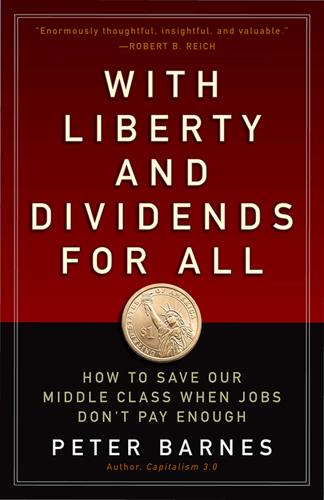
With Liberty and Dividends for All: How to Save Our Middle Class When Jobs Don't Pay Enough
by
Peter Barnes
Published 31 Jul 2014
Political debate in Washington rarely goes beyond this sort of possibility. The adjacent possible, by contrast, lies further in the future and requires a punctuation. It’s often said that pragmatists deal with the incremental possible while idealists fantasize about the adjacent possible. I don’t see it that way. I see preparing for the adjacent possible as a different form of pragmatism, a kind that looks further ahead. At certain times in history, it’s not fantasy to think about adjacent possibilities—it’s pragmatic, strategic, and necessary. Now is such a time. In my mind, a market economy with liberty and dividends for all is a plausible adjacent possibility. I also believe that a crisis—more severe than that of 2008—isn’t far away and that we need to prepare for it.
…
At such times, they either collapse or shift into what biologist Stuart Kauffman calls the “adjacent possible.”3 The adjacent possible isn’t simply whatever happens next. Rather, it’s a set of potential futures in which modified versions of the existing system lurk. Which of these versions eventually emerges is inherently unpredictable. But when the system includes humans, it’s possible for humans to affect the outcome. We can do this by imagining a preferred future and building support for it prior to the crisis. It’s important to distinguish between the adjacent possible and what might be called the incremental possible. By the latter I mean adjustments to the existing system that don’t require a serious crisis (aka a punctuation).
…
—From the US Pledge of Allegiance For Jonathan Rowe CONTENTS Preface 1. A Simple Idea 2. The Tragedy of Our Middle Class 3. Fix the System, Not the Symptoms 4. Extracted Rent 5. Recycled Rent 6. The Alaska Model 7. Dividends for All 8. Carbon Capping: A Cautionary Tale 9. From Here to the Adjacent Possible Join the Discussion Appendix: The Dividend Potential of Co-owned Wealth Notes Acknowledgments Index About the Author PREFACE I wrote this book because I’m appalled by the decline of America’s middle class and outraged when our leaders mislead us about what we can and can’t do to stop it.

How We Got to Now: Six Innovations That Made the Modern World
by
Steven Johnson
Published 28 Sep 2014
They’re worth exploring because we are living through comparable revolutions today, set by the boundaries and opportunities of our own adjacent possible. Learning from the patterns of innovation that shaped society in the past can only help us navigate the future more successfully, even if our explanations of that past are not falsifiable in quite the same way that a scientific theory is. — BUT IF SIMULTANEOUS INVENTION is the rule, what about the exceptions? What about Babbage and Lovelace, who were effectively a century ahead of just about every other human being on the planet? Most innovation happens in the present tense of the adjacent possible, working with the tools and concepts that are available in that time.
…
We invented agriculture and cities and aqueducts and the printing press, but cold was outside the boundaries of possibility for all those years. And yet somehow artificial cold became imaginable in the middle of the nineteenth century. To use the wonderful phrase of the complexity theorist Stuart Kauffman, cold became part of the “adjacent possible” of that period. How do we explain this breakthrough? It’s not just a matter of a solitary genius coming up with a brilliant invention because he or she is smarter than everyone else. And that’s because ideas are fundamentally networks of other ideas. We take the tools and metaphors and concepts and scientific understanding of our time, and we remix them into something new.
…
We take the tools and metaphors and concepts and scientific understanding of our time, and we remix them into something new. But if you don’t have the right building blocks, you can’t make the breakthrough, however brilliant you might be. The smartest mind in the world couldn’t invent a refrigerator in the middle of the seventeenth century. It simply wasn’t part of the adjacent possible at that moment. But by 1850, the pieces had come together. The first thing that had to happen seems almost comical to us today: we had to discover that air was actually made of something, that it wasn’t just empty space between objects. In the 1600s, amateur scientists discovered a bizarre phenomenon: the vacuum, air that seemed actually to be composed of nothing and that behaved differently from normal air.
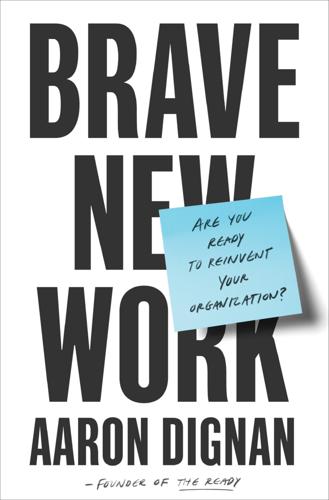
Brave New Work: Are You Ready to Reinvent Your Organization?
by
Aaron Dignan
Published 1 Feb 2019
“Managing the present to actually create a new direction of travel is more important than creating false expectations about how things could be in the future.” What he’s getting at is the difference between closing the gap—trying to achieve a predetermined future state—and discovering what author Steven Johnson calls the adjacent possible. In his words, “The adjacent possible is a kind of shadow future, hovering on the edges of the present state of things, a map of all the ways in which the present can reinvent itself.” The greatest loss of time is delay and expectation, which depend upon the future. We let go the present, which we have in our power, and look forward to that which depends upon chance, and so relinquish a certainty for an uncertainty.
…
Worst of all, discovery and diagnosis in a large bureaucratic system are painfully slow. In the time it takes to design a survey, get it approved, send it out to your employees, nag them to fill it out, get the results back, average them out, and decide on your top three objectives . . . we can help dozens and dozens of teams explore and experience their own adjacent possibilities. Instead of diagnosis, we typically proceed with a process of experiential learning and dialogue we call priming. For catalysts, leaders, and teams who are willing, we want to challenge the basic assumptions we all hold about organizations and how we work in them. Most of us have not had the time to think about how we work, and why we work that way, in a long time (maybe ever).
…
At the end of every priming experience, you’re extending an invitation, not a mandate: Join us. Try something. Start a conversation. Ask for help. We are here for you. A whole new way of working is possible. Step into the space. Looping Earlier we talked about designing change to reveal the adjacent possible. Within organizations, we endeavor to do this through a process we call looping, inspired in part by Jason Little’s Lean Change Management. In our work, a loop contains three stages that are practiced recursively: Sensing Tensions, Proposing Practices, and Conducting Experiments. The Looping Process Looping is at the heart of continuous participatory change.
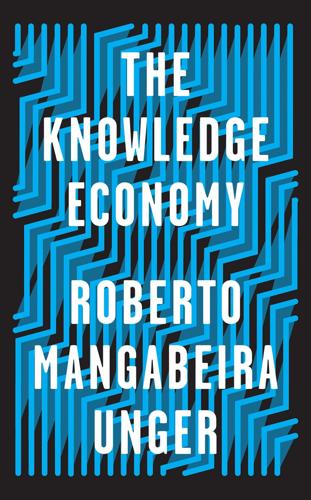
The Knowledge Economy
by
Roberto Mangabeira Unger
Published 19 Mar 2019
The image is the memory of a perception. The second operation is the one that Kant disregarded: transformative variation. We grasp a phenomenon by projecting or provoking its change in response to certain natural or staged interventions. We understand the phenomenon by subsuming it under a range of adjacent possibles: what it could become, or what we could turn it into. The approximation of production to imagination is the heart of the knowledge economy, and ever more so as it spreads and deepens. We can explore the affinity between production and imagination in two ways: with regard to the way of organizing work or the technical division of labor, and with respect to the relation between worker and machine.
…
Under the knowledge economy, the way we work together—the technical division of labor—can begin to resemble the workings of the mind as imagination, and to take on each of its features: its nonmodular and nonformulaic traits and, as it develops more fully, its powers of recursive infinity and negative capability. Production can develop by exploiting, thanks to these traits and powers, new products and possibilities of production at the penumbra of the adjacent possible. The less stark the contrast between supervisory and implementing responsibilities or, as a consequence, among specialized jobs of implementation, the better our chances of identifying and realizing such possibilities. The productive plan is continuously revised by the work team in the course of being carried out.
…
However, it is not the moderation or the extremism of our proposals that matter; it is the trajectory to which they belong, whether they are close to present arrangements or remote from them. The language of transformative politics regularly prefers to combine the earliest and the most distant steps; it is at once practical and prophetic. It seeks to provide or to evoke down payments, in the realm of the adjacent possible, for the redirection that it seeks, drawing energy from the association of ideals and interests with examples within grasp. In conceptual work, however, it may be most useful to define and discuss the direction at a middle range between the closest and the most distant steps. The politician and the prophet have reason to avoid the description of initiatives that exceed, but not too much, the reach of the theres that we can readily reach from here.

Futureproof: 9 Rules for Humans in the Age of Automation
by
Kevin Roose
Published 9 Mar 2021
I also think we need to resist the urge to push the AI conversation too far into the future. I’ve always loved the concept of the “adjacent possible,” a term coined by the evolutionary biologist Stuart Kauffman to describe the way biological organisms evolve in gradual, incremental steps. The adjacent possible is a useful concept to apply to the world of technology, because it takes us out of the realm of sci-fi and narrows our scope to more realistic outcomes. A world in which robots flawlessly perform all human labor, freeing us all up to make art and play video games every day, is probably not part of the adjacent possible. But a world in which we use machine intelligence to reduce carbon emissions, find cures for rare diseases, and improve government services for low-income families might be.
…
But a world in which we use machine intelligence to reduce carbon emissions, find cures for rare diseases, and improve government services for low-income families might be. It’s on us—the people who love technology but worry about its use—to explore this adjacent possible and push for the best version of it. It’s also important not to get too discouraged, and to remember, despite all of our worries, that AI and automation could be unbelievably good for humankind, if we do it right. A world filled with AI could also be filled with human creativity, meaningful work, and strong communities. And it’s worth reminding ourselves that, historically, technological shocks have been followed by social progress, even if it’s taken a while.
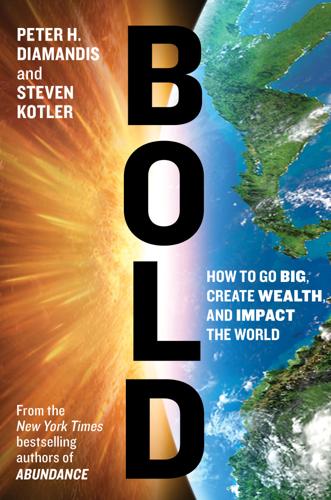
Bold: How to Go Big, Create Wealth and Impact the World
by
Peter H. Diamandis
and
Steven Kotler
Published 3 Feb 2015
Feynman’s Small Idea,” Innovation 5, no. 5 (October/November 2007), http://www.innovation-america.org/dr-feynmans-small-idea. 26 AI with Shingles. 27 For arguably the best bit of writing on the adjacent possible, see Steven Johnson, “The Genius of the Tinkerer,” Wall Street Journal, September 25, 2010, http://online.wsj.com/articles/SB10001424052748703989304575503730101860838. Also see “The Adjacent Possible: A Talk with Stuart A. Kauffman,” Edge.org, November 9, 2003, http://edge.org/conversation/the-adjacent-possible. INDEX * * * A note about the index: The pages referenced in this index refer to the page numbers in the print edition. Clicking on a page number will take you to the ebook location that corresponds to the beginning of that page in the print edition.
…
But without bold leadership to help us set the course, our history also tells us that we can wander in the desert of bad decisions for a mighty long time. “The adjacent possible” is theoretical biologist Stuart Kauffman’s wonderful term for all the myriad paths unlocked by every novel discovery, the multitude of universes hidden inside something as simple as an idea. 27 Abundance is one of those simple ideas. Its time has come. It is up to the bold to unlock this adjacent possible, to help humanity live up to our full exponential potential. AFTERWORD NEXT STEPS—HOW TO TAKE ACTION * * * It’s an exciting time.
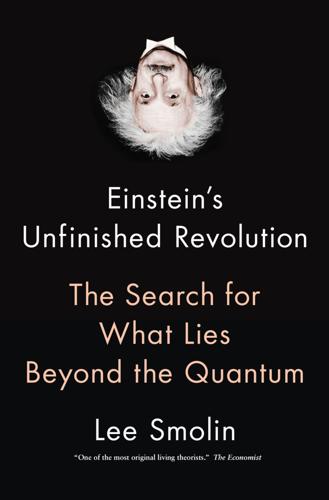
Einstein's Unfinished Revolution: The Search for What Lies Beyond the Quantum
by
Lee Smolin
Published 31 Mar 2019
Given the present state of the world, not everything can happen in the next time step. Those events that might be next Kauffman calls the adjacent possible. The possible near-future events that make up the adjacent possible are not yet real, but they define and constrain what might be real. The adjacent possible of Schrödinger’s cat includes a live cat and a dead cat. It does not include a brontosaurus or an alien dog. So the elements of the adjacent possible have properties, even if the law of the excluded middle does not apply to them. As objects with properties, there are facts of the matter about them.
…
The link provided will take you to the beginning of that print page. You may need to scroll forward from that location to find the corresponding reference on your e-reader. academic community, 277 academic life, 94 acceleration, 297 actuality, possibility and, 177–78, 197–98, 200, 243 adjacent possible, 201 Against Method (Feyerbend), 173 Aharonov, Yakir, 118, 216 alternate geometry, 229 American Communist Party, 115n amplitude, 138 angular momentum, 77, 263n, 297 anti-realism, xxvi, xxix, 8, 26, 94, 117, 175 of Bohr, 106 definition of, 297 electrons and, 85 nature and, xxv physics and, xxv quantum mechanics and, xxi approximations, 192 Arcadia (Stoppard), 15 Aspect, Alain, 45, 46, 49, 220 assumptions, 10 astronomy, 274 atomic bomb, 108 atomic laws, 251–52, 258 atomic scale, xvii, xx, 77, 91 atomic systems, wave function and, 141, 213 atoms, xiv, xv, xvii, 56, 71 behavior of, 129 Bohr on, 93 chemical properties of, 3 communication between, 46–47 configuration space of, 122–24, 123, 217–18 copies of, 248 decay of, 125 definition of, 297 density of, 73 electrons and, 78, 83 energy and, 77–78 ensemble of, 59 entanglement of, 252 freedom and, 246 gravity and, 74 Heisenberg on, 87 laws of, 251–52, 258 light and, 77–78 location of, 5 matter and, 72 measurement of, 195 molecules and, 3, 246–47 nucleus of, 74 observables of, 27 photons and, 195, 209–10 pilot wave theory and, 122 properties of, xvi, 5, 6–7 quantum mechanics and, 6, 62 quantum states of, 37–38 quantum teleportation, 186 radiation and, 52, 93, 125 realism and, 75 retrocausality, 216–17, 217 solar system and, 74 spacetime, 257–59 spectrum of, 59–60, 78 states of, 49–51, 60–61, 77–78, 146–47, 152 stationary states of, 77 superposition of, 4–5, 6–7, 50, 139–40, 146, 152, 156–57 true theory of, xxi water and, xv averages, 62–63 backgrounds cosmic microwave, 121 definition of, 297 dependence on, 264, 297 independence principle, 229, 264, 267, 297 spacetime and, 269 symmetry and, 264 Barbour, Julian, 201–3, 244 Bateson, Gregory, 191 Bayesian probabilities, 160–61, 163, 297 beables, 26–27, 206–7, 213, 218, 222, 224, 240 beliefs, 164, 205 Bell, John, xxviii, xxix, 26, 39, 41, 45, 47–49, 55, 56, 105, 220 hidden variables and, 184 restriction theorem, 184, 215, 235, 298 Bernstein, Herbert, xxviii, 25, 27 big bang, 221 biochemistry, 177 biology, quantum mechanics and, 3 black-body radiation, 79 black holes, 75, 134 Bohm, David, xxix, 105, 107–8 Bohr and, 113 communism and, 114–15 Einstein and, 108–11 guidance equation and, 109 measurement process, 117 Oppenheimer and, 112 pilot wave theory and, 109, 110, 116, 118 Princeton and, 113 theory of, 109–12 von Neumann and, 110 Bohmian mechanics.

The End of Nice: How to Be Human in a World Run by Robots (Kindle Single)
by
Richard Newton
Published 11 Apr 2015
Or fail fast and start again. In this way the accelerators – and there are thousands of these around the world – churn out legions of disrupters who change the rules and language of business. More than this, each of these companies and each of the individuals inside are expanding and accelerating the limits of the adjacent possible. Desperately seeking failures And now it’s the folk who embody this depth of character that allows them to contemplate failure, sometimes publicly, continue anyway and keep striving that big corporates are trying to hire. It’s not just that these people have had the vision and flexibility to respond, pivot, and when necessary get up off the floor; it’s that they have had the resilience to weather the blow of actual failure.
…
You need the spark of random interaction with other ideas. That’s where the action is. And this is Anti-Order. It’s the mess that comes from the clash of domains, the creative friction of different ideas, the surprising combinatorial alchemy and the mash-up of incongruent disciplines. This is the primordial soup of ideas. This is where the adjacent possible slams into you from the side and yells: “How did that feel?!” And you know? It feels invigorating. Creativity, as someone once said, is the offspring of copulating ideas. It is the esemplastic combination of two or more thoughts that haven’t been joined this way before. It’s how 1+1 = 3. It’s how you suddenly notice that the field in which you are expert could benefit from the addition of this new idea snatched from a completely different discipline.
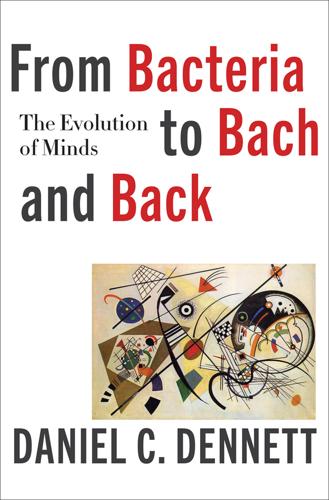
From Bacteria to Bach and Back: The Evolution of Minds
by
Daniel C. Dennett
Published 7 Feb 2017
Proceedings of the Aristotelian Society, Supplementary Volumes: 93–119. Katchadourian, Raffi. 2015. “The Doomsday Invention: Will Artificial Intelligence Bring Us Utopia or Destruction?” New Yorker, November 23, 64–79. Kauffman, Stuart. 2003. “The Adjacent Possible.” Edge.org, November 9, https://edge.org/conversation/stuart_a_kauffman-the-adjacent-possible. Keller, Helen. 1908. The World I Live In. New York: Century. Kessler, M. A., and B. T. Werner. 2003. “Self-Organization of Sorted Patterned Ground.” Science 299 (5605): 380–383. Kobayashi, Yutaka, and Norio Yamamura. 2003. “Evolution of Signal Emission by Non-infested Plants Growing Near Infested Plants to Avoid Future Risk.”
…
The process of natural selection cannot “consider all things” and is always in the midst of redesign, so it is not guaranteed to find the optimal solution to any specific design problem posed, but it does amazingly well, typically better than intelligent human designers who are striving for optimal design. 19Legendary software designer Charles Simonyi, the principal creator of Microsoft Word, has devoted more than twenty years to the task of creating what he calls “Intentional Software,” which would ideally solve this problem or a valuable subset of these problems. The fact that several decades of high-quality work by a team of software engineers has not yet yielded a product says a lot about the difficulty of the problem. 20Evolution explores the “adjacent possible,” see Kauffman (2003). 21How can I speak of evolution, which famously has no foresight, being able or unable to predict anything? We can cash out this handy use of the intentional stance applied to evolution itself by saying, less memorably and instructively, that highly variable environments have no information about future environments for natural selection to (mindlessly) exploit (see chapter 6). 22The useful term Whig history refers to interpreting history as a story of progress, typically justifying the chain of events leading to the interpreter’s privileged vantage point.
…
Of course if there really is nothing new under the sun, this is no limitation, but human imagination, the capacity we have to envision realities that are not accessible to us by simple hill climbing from where we currently are, does seem to be a major game-changer, permitting us to create, by foresighted design, opportunities and, ultimately, enterprises and artifacts that could not otherwise arise. A conscious human mind is not a miracle, not a violation of the principles of natural selection, but a novel extension of them, a new crane that adjusts evolutionary biologist Stuart Kauffman’s concept of the adjacent possible: many more places in Design Space are adjacent to us because we have evolved the ability to think about them and either seek them or shun them. The unanswered question for Domingos and other exponents of deep learning is whether learning a sufficiently detailed and dynamic theory of agents with imagination and reason-giving capabilities would enable a system (a computer program, a Master Algorithm) to generate and exploit the abilities of such agents, that is to say, to generate all the morally relevant powers of a person.103 My view is (still) that deep learning will not give us—in the next fifty years—anything like the “superhuman intelligence” that has attracted so much alarmed attention recently (Bostrom 2014; earlier invocations are Moravec 1988; Kurzweil 2005; and Chalmers 2010; see also the annual Edge world question 2015; and Katchadourian 2015).
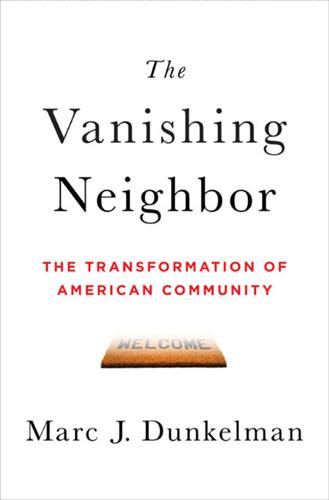
The Vanishing Neighbor: The Transformation of American Community
by
Marc J. Dunkelman
Published 3 Aug 2014
His breakthrough was midwifed by his familiarity with Jenner’s previous work. The broad concept of vaccination—Pasteur’s sudden insight—was made possible by the application of an old idea to a new set of circumstances. He had taken a step into what the author Steven Johnson recently called the “adjacent possible.”4 By piecing together the bits of information available to him at the moment of invention, Pasteur moved one step up the chain of knowledge. His new thinking stood on a foundation provided by Jenner’s research, just as Jenner’s “aha!” moment had been prompted by the dairymaid’s common wisdom.
…
Yet the combination of these and other equally familiar data in Newton’s theory of gravity changed mankind’s outlook on the world.6 The same process applies to the great inventions of the last few years—even though we may be inclined to give credit to the apparent genius of one person. The iPhone didn’t emerge sui generis out of Steve Jobs’s head. No team at Apple could have invented such a device in 1975, if only because the constituent ideas that merged to place a graphically integrated handheld device into the adjacent possible hadn’t yet been invented. A whole series of individual ideas—mobile phones, graphical interfaces, satellite connectivity—had to be blended and perfected simply to conceive of a phone like the one Apple eventually created. It’s not taking anything away from Jobs’s genius as a manager or Apple’s ingenuity as a firm to argue that their ideas flowed from separate “parent” work done beforehand.
…
Fire Department Profile Through 2011,” National Fire Protection Association, October 2012. 38Wuthnow, Loose Connections, 17. 39Friedman and Mandelbaum, That Used to Be Us, xiii. Index Page numbers listed correspond to the print edition of this book. You can use your device’s search function to locate particular terms in the text. abortion, 69, 114, 116 Abrams, Samuel, 139 academic scholarship, data in, 6–7 “adjacent possible,” 159 adolescents, 28–31, 215, 217, 224 sexual orientation of, 43 shift of social capital from middle rings by, 120–24 advertising, 38, 60, 102–3 advocacy organizations, 116–18 affluence, 48, 52–55, 67, 72, 83 affirmation, search for, 102–12, 126, 138 outer-ring relationships and, 107–12, 115 trade-offs and, 112, 115 African Americans, 79, 111, 137, 146 civil rights movement and, 23–24, 108–9 in Great Migration, 40–41, 43, 137 in interracial marriage, 68 agriculture, 15, 16, 20, 53, 82, 84, 233, 260n airlines, airports, xi, 25, 230 Alfa Romeo, 172 Allentown, Pa., 170–74 al Qaeda, 56 Alzheimer’s disease, 199–200, 206–7 American Age (American Century), unwinding of, xiv–xv, xviii, 152–53 American character, 11, 67, 213–14 undermining of, 4, 65, 72–73 American Dream, xiv, xviii, xx, 3, 21, 32, 65, 75, 83, 226–27, 235, 240 American exceptionalism, xiv, xviii, 82, 142, 177, 226–41 American Idol (TV show), 36–37 American Revolution, xii, xix, 81, 151, 157–58, 194, 247n Americorps, 213 Amherst, Sir Jeffrey, 157 anthropologists, 90–97 Apple, 10, 173, 64, 160 assembly lines, 53, 85 assisted-living facilities, 197, 203 Associated Press, 185 Atlanta, Ga., 136–37 Atlantic, 46, 199 Aung San Suu Kyi, 64 authenticity, personal, 64–66 automobile industry, 10, 172, 175, 205 autonomy, 68, 73 baby boomers, 6, 28, 127, 133, 197, 198, 205 bands (overnight camps), 92, 94, 95, 96 banks, xv, xvii, 180, 181 Barbados, 179–81, 191 basketball, 8–9, 11–12 Bell, Daniel, 249n Bellah, Robert, 65–66, 73, 81 Bell Labs, 164, 173 belongingness, 4–5, 74, 110 Bender, Thomas, 83–84, 138 Berg, Joel, 62 Beverly Hillbillies, The (TV show), 36 “be yourself,” 63–66, 73–74, 102–3, 149, 218 bigotry, 117, 149, 237 Big Sort, The (Bishop with Cushing), 48, 50, 95, 135, 147, 238 Big Three, the, 8–9 bin Laden, Osama, 56 biology, 90–94 Bipartisan Policy Center, 188–89 Birmingham, England, 166–67 Bishop, Bill, 47–48, 95, 124, 135, 147, 184, 189, 238 Bissell, Cassandra, 140 blacks, see African Americans blogs, 36, 37, 109–10, 187 Bosh, Chris, 8–9 Boston, Mass., 33, 55, 84 Bowling Alone (Putnam), 7, 97, 99–100, 113–16, 119, 120, 134–35, 141, 149, 151–52, 192, 193 brain, 90–92, 94, 98, 121, 143, 144–45, 223–24 Brazil, 178–79, 267n Brokaw, Tom, 70 “broken windows” theory, 150 Brooks, David, 46–47, 48, 229 Brown University, 163 budget, federal, xv–xvi Buffalo, N.Y., ix–xi, xviii, 97, 136, 137, 170, 196–97, 240 Buffett, Warren, 27 bureaucracy, 16, 52, 110, 194, 202, 203, 204, 206, 210 Burke, Edmund, 81, 232 Burt, Ronald, 165, 168, 266n buses, 33–35 Bush, George W., 47, 54, 67, 184, 255n business, xvii, 10, 16, 52, 131–32, 163–68, 175–76, 235 in Barbados vs.
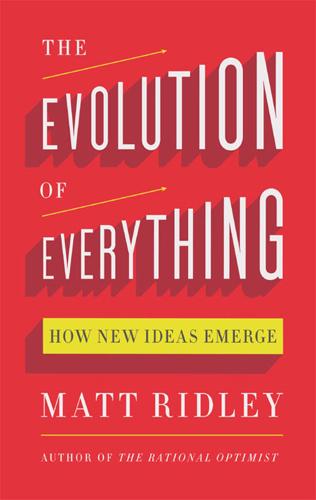
The Evolution of Everything: How New Ideas Emerge
by
Matt Ridley
Am I heading for a Lucretian swerve? Will I be forced to concede that the combinatorial vastness of the library of possible proteins makes it impossible for evolution to find ones that work? Far from it. We know that human innovation rarely designs things from scratch, but jumps from one technology to the ‘adjacent possible’ technology, recombining existing features. So it is taking small, incremental steps. And we know that the same is true of natural selection. So the mathematics is misleading. In a commonly used analogy, you are not assembling a Boeing 747 with a whirlwind in a scrapyard, you are adding one last rivet to an existing design.
…
That’s the path Japan, South Korea, China, India, Mauritius and Brazil have followed in recent years, and it’s the path that Britain and America followed at a more leisurely pace in the eighteenth, nineteenth and twentieth centuries. This path dependence is obvious in some ways. There’s not much point in mining uranium till you have invented steel, cement, electricity and computing, and understood nuclear physics. Technology proceeds, like evolution, to the ‘adjacent possible’, a phrase coined by the evolutionary biologist Stuart Kauffman. It does not leap far into the future. I recently tried to think of examples of inventions that came long after their time, that should have been invented much sooner than they were – things we take for granted now and that would have been great for our grandparents to have had.
…
I made a similar point in my 2010 book The Rational Optimist: How Prosperity Evolves, in drawing attention to the similarity between the recombination of genes as a result of sex to produce biological novelty and the recombination of ideas as a result of trade to produce technological novelty: ‘ideas having sex’ explains why innovation has tended to happen in open societies indulging in enthusiastic free trade. The same year, Steven Berlin Johnson published Where Good Ideas Come From: The Natural History of Innovation, and developed the idea that the story of technology, like biological evolution, is a ‘gradual but relentless probing of the adjacent possible, each new innovation opening up new paths to explore’. The economics writer Tim Harford, in his 2011 book Adapt: Why Success Always Starts With Failure, pointed out that ‘trial and error is a tremendously powerful process for solving problems in a complex world, while expert leadership is not’.

The Rise of Superman: Decoding the Science of Ultimate Human Performance
by
Steven Kotler
Published 4 Mar 2014
Moore’s law is the reason why today’s smartphones are a thousand times faster and a million times cheaper than a supercomputer from the 1970s. Meanwhile, biotechnology—the category that underpins exoskeletons and other enhancement technologies—is currently accelerating at five times the speed of Moore’s Law. What is the adjacent possible for strap-on bionics? What promise do exoskeletons hold for the future of progression? What about flow hacking? Until recently, older and wiser meant creakier and slower. But with biotechnology expanding at an exponential rate, we can now refresh the physical line of development, while our cognitive and creative lines continue to grow.
…
In fact, Bigelow Aerospace, another private space company, is now developing an inflatable space hotel that’s scheduled for 2017 deployment. With these developments around the corner, having basic space evacuation procedures in place—including a supersonic-capable space suit—just seems to make sense. But if you want to really talk about the adjacent possible: the combination of Baumgartner’s success and the birth of the space tourism industry means that space diving could be the next extreme sport frontier. It sounds silly, of course, but it wasn’t too long ago that surfing a 100-foot wave or free-soloing Half Dome was equally ludicrous. Plus, consider the space-diving upside.
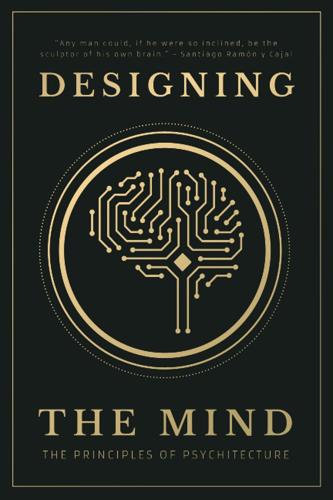
Designing the Mind: The Principles of Psychitecture
by
Designing The Mind
and
Ryan A Bush
Published 10 Jan 2021
You work backwards from this vision, through broad strategies - all the way down to individual algorithmic optimizations, each of which is one small step toward that vision. When you practice psychitecture, you design your mind’s structures such that your goals come about naturally. You move to the adjacent possible using your highest ideals as your beacon. Psychitecture’s aim is to reform biologically ingrained habits and tendencies of all forms. It’s goal is to rewire the mental biases, distortions, and assumptions that cause us to make mistakes, the unnecessary suffering we fall victim to on a regular basis, the mentalities that hold us back in life, and the impulses that lead us away from our ideals.

The Filter Bubble: What the Internet Is Hiding From You
by
Eli Pariser
Published 11 May 2011
Creative environments often rely on “liquid networks” where different ideas can collide in different configurations. They arrive through serendipity—we set out looking for the answer to one problem and find another—and as a result, ideas emerge frequently in places where random collision is more likely to occur. “Innovative environments,” he writes, “are better at helping their inhabitants explore the adjacent possible”—the bisociated area in which existing ideas combine to produce new ones—“because they expose a wide and diverse sample of spare parts—mechanical or conceptual—and they encourage novel ways of recombining those parts.” His book is filled with examples of these environments, from primordial soup to coral reefs and high-tech offices, but Johnson continually returns to two: the city and the Web.

Rebel Ideas: The Power of Diverse Thinking
by
Matthew Syed
Published 9 Sep 2019
This pattern applies to Facebook (which connected an existing web infrastructure with technology enabling people to build digital networks and share media) and Instagram (which linked Facebook’s most basic concepts with a smartphone application complete with the capacity to modify a photo with digital filters) and beyond. Recombination is the leitmotiv of digital innovation. With each new combination, fresh combinations loom into the terrain of what the biologist Stuart Kauffman calls ‘the adjacent possible’. New prospects open up, new vistas come into view. ‘Digital innovation is recombinant innovation in its purest form,’ Brynjolfsson and McAfee write. ‘Each development becomes a building block for future innovations . . . building blocks don’t ever get used up. In fact, they increase the opportunities for future recombinations.’15 But this leaves us with a critical question.

The Power Law: Venture Capital and the Making of the New Future
by
Sebastian Mallaby
Published 1 Feb 2022
Accel partners aimed to comprehend entrepreneurs so thoroughly that they could complete their sentences and predict the next slide in their pitches. They spoke internally of the “90 percent rule.” An Accel investor should know 90 percent of what founders are going to say before they open their mouths to say it.[18] Accel’s specialist approach made it particularly adept at identifying what venture capitalists call “adjacent possibilities.” By embedding themselves in their respective sectors, sitting on boards of portfolio companies, and blending their direct observations with management-consultant-style analyses, Accel partners could anticipate the next logical advance in a technology. “Every deal should lead to the next deal,” was another Accel saying.[19] Swartz in particular liked to invest in successive iterations in a single product class.
…
A B C D E F G H I J K L M N O P Q R S T U V W X Y Z A Abingworth, 89–90 academic tenure, 96, 431n Accel Capital, 122, 128–32, 249–61, 377, 436n dot-com bust, 184–85 Facebook, 195, 253–61, 264, 271, 272, 306, 380, 382 founding of, 128–29 gender issues, 272 Google, 182 Hailo, 357 Kleiner Perkins compared with, 210, 265, 270, 272 Myspace, 252–53 Portal Software, 174, 436n, 440n “prepared mind” approach of, 122, 128, 210, 250–51, 252, 308–9 Skype, 191, 251–52, 285–86 specialist approach of, 129–31, 221 Spotify, 289 UUNET, 135–39, 143–44, 286 Accel India, 324 Accel Telecom, 129–31, 435n, 436n activist investing, 60, 63, 66–69, 80, 81, 84 Adams, Rick, 132–44, 436n “adjacent possibilities,” 131 Adobe, 98 adventure capital, 17–18, 25–27 Airbnb, 302, 353 Andreessen Horowitz’s investment, 298 blitzscaling, 387 Sequoia Capital’s investment, 304, 315, 455n Alcorn, Allan, 425n Alibaba, 226–31, 232–34, 241–42, 392, 446–47n Chinese government actions against, 402 Goldman Sachs’s investment, 227–30, 232–34, 242, 377, 447n Hanguang 800, 402 IPO, 229 Son’s investment, 229–31, 446n Tiger’s investment, 285 “alienation,” 420n Altair, 20 Altman, Sam, 218, 318–19, 455n Amazon, 12, 170, 176, 185, 336, 388 Doerr’s investment, 179–80, 263 IPO, 13 American Research and Development (ARD), 25, 28–31, 51–52, 98 Digital Equipment, 28–29, 31, 36–37, 45, 419n, 420n Fairchild Semiconductor, 35 financial and legal structure of, 30–31, 41, 45, 51–52, 419n, 421–22n share price, 31, 420n America Online (AOL), 143, 152, 441n Ampersand, 312 Ampex, 26–27 “anchoring,” 310–11, 454n Andreessen, Marc, 290–300, 434n Facebook, 276–77 “It’s Time to Build,” 14 Mosaic, 20, 144–45, 146, 148, 237, 395 Netscape, 146–48, 150, 237, 277–78, 290 Andreessen Horowitz (a16z), 290–300, 311 Clubhouse, 14 Instagram, 213 Nicira, 293–95, 296, 379 Okta, 295–96, 379 Skype, 297–98, 299 Uber, 353–55, 378 Zenefits, 341–42 Anduril, 403–4 angel investing, 85, 175–76, 311, 316 Facebook, 198–99, 208 Google, 173–76, 178–79, 215 animal husbandry, 1–2, 4 Ante, Spencer, 29 Ant Group, 402 anti-skill thesis, 377–79 Apple, 82–91, 106, 379–80, 430n Abingworth’s investment, 89–90 IPO, 91, 160–61 Markkula’s investment, 84–87 Rock’s investment, 87–89, 90–91 Sequoia Capital’s investment, 83–84, 85–86, 90–91, 160, 430n Venrock’s investment, 86–87, 88, 90–91, 429n, 430n Apple I, 82 Apple II, 84–85 Arab oil embargo of 1973, 63–64 Archie, 20 ARD.
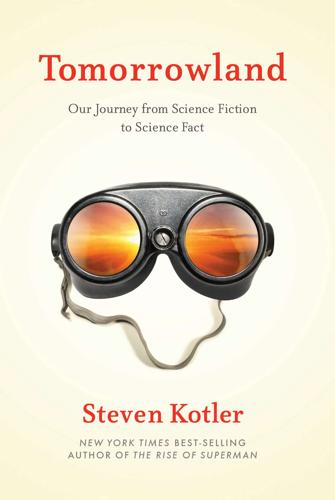
Tomorrowland: Our Journey From Science Fiction to Science Fact
by
Steven Kotler
Published 11 May 2015
In fact, Bigelow Aerospace, another private space company, is now developing an inflatable space hotel that’s scheduled for 2017 deployment. With these developments around the corner, having basic space evacuation procedures in place — including a supersonic-capable space suit — just seems to make sense. But if you want to really talk about the adjacent possible: The combination of Baumgartner’s success and the birth of the space tourism industry means that space diving could be the next extreme sport frontier. It sounds silly, of course, but it wasn’t too long ago that surfing a 100-foot wave or free-soloing Half Dome — two “impossible” feats lately accomplished — were equally ludicrous.

Blitzscaling: The Lightning-Fast Path to Building Massively Valuable Companies
by
Reid Hoffman
and
Chris Yeh
Published 14 Apr 2018
And, perhaps most important, you can make sure that you have the ability to correct your mistakes. My earlier book, The Start-up of You, introduces the useful concept of “ABZ planning.” Entrepreneurs should always have a Plan A, a Plan B, and a Plan Z. Plan A is your best current plan; Plan B is an alternate plan, based on the “adjacent possible” to which you can pivot if Plan A isn’t working or you learn of an even better opportunity; Plan Z is your fallback plan for surviving a worst-case scenario. ABZ planning gives you multiple opportunities to recover from mistakes or setbacks. At my first start-up, SocialNet, we were delighted when we managed to hire a brilliant server engineer (Plan A).

Badvertising
by
Andrew Simms
One reason that the climate is changing faster than humanity’s response to halt the ecological decline is the vortex of misinformation and misdirection from advertising. It drowns out information about the consequences of the overconsumption it encourages, and, like a cuckoo in the nest, it pushes out from our imaginations the adjacent possibilities about different ways to live and organise the economy. We have both lived, and are products, of this late stage of debt-fuelled, consumer capitalism run riot. What seems normal, immutable and without alternative is actually a tremendously recent phenomenon that has taken root and spread to dominate in a single lifespan.

Wonderland: How Play Made the Modern World
by
Steven Johnson
Published 15 Nov 2016
Viewed purely in terms of the technological innovation at their disposal, the poets and painters of the early seventeenth century were living in the Stone Age compared to the high-tech bounty available to the composers. That extensive inventory of sonic tools illustrates how, from the very beginning, our appetite for music has been satisfied by engineering and mechanical craft as much as by artistic inspiration. The innovations that music inspired turned out to unlock other doors in the adjacent possible, in fields seemingly unrelated to music, the way the “Instrument Which Plays by Itself” carved out a pathway that led to textile design and computer software. Seeking out new sounds led us to create new tools—which invariably suggested new uses for those tools. Legendary violin maker Stradivari’s workshop Consider one of the most essential and commonly used inventions of the computer age: the QWERTY keyboard.

This Will Make You Smarter: 150 New Scientific Concepts to Improve Your Thinking
by
John Brockman
Published 14 Feb 2012
Exaptations are too unpredictable and too dependent on the whole suite of living creatures to be analyzed and coded into properties of DNA sequences. Better, as the theoretical biologist Stuart Kauffman proposes, to think of evolutionary dynamics as the exploration, in time, by the biosphere, of the adjacent possible. The same goes for the evolution of technologies, economies, and societies. The poverty of the conception that economic markets tend to unique equilibria, independent of their histories, shows the danger of thinking outside of time. Meanwhile the path dependence that economist Brian Arthur and others show is necessary to understand real markets illustrates the kind of insights that are gotten by thinking in time.

Rage Inside the Machine: The Prejudice of Algorithms, and How to Stop the Internet Making Bigots of Us All
by
Robert Elliott Smith
Published 26 Jun 2019
This complexity is unpredictable, yet it has patterns; unpredictable patterns may in fact be a characteristic of systems that we would call living systems. Stuart Kauffman has used mathematical models to show that living systems tend to evolve towards an edge of chaos: that point where their behaviour is maximally random while maintaining some structure. Existing at this edge allows the evolving system to retain the maximum number of adjacent possible states that it can change to at any moment, while still maintaining stable behaviours. This, rather than the drive towards some optima implied by ‘survival of the fittest’, appears to be the real characteristic of living systems; they change their apparent models and their criteria at any time as circumstance dictates, defying the very notion of fixed models and criteria.

Valley of Genius: The Uncensored History of Silicon Valley (As Told by the Hackers, Founders, and Freaks Who Made It Boom)
by
Adam Fisher
Published 9 Jul 2018
He like opened his eyes really wide and said, “Yeah, you could do all that!” And so that was Odeo. Ev Williams: We didn’t know that other people were talking about the same idea. It turns out that audio distributed to iPods was what podcasting was, and it was starting to get some traction. Like a lot of inventions, the adjacent possible reveals itself and everybody sees it at the same time and thinks about it. And we told Noah: “Noah—you should totally do this!” And he was like, “That’s interesting…” Adam Rugel: Odeo was interesting. The idea was to be a network where you could consume podcasts. Dom Sagolla: Back in 2005, there weren’t a lot of people podcasting.